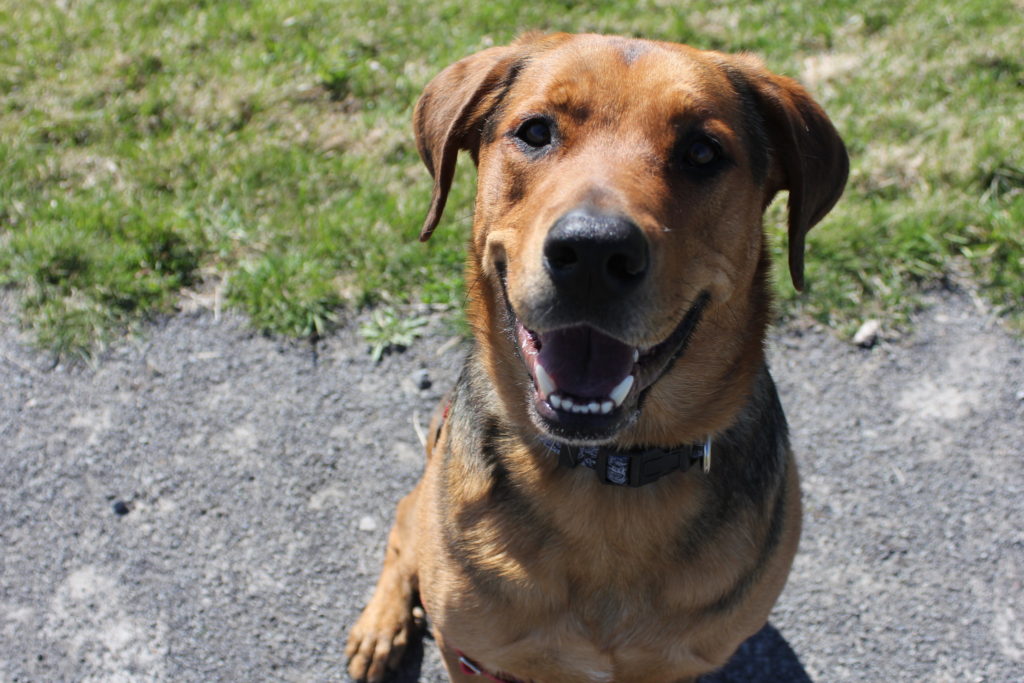April 14, 2022
What Your Dog’s Body Language is Really Telling You
This week is National Dog Bite Prevention Week. As a humane education coordinator at the OHS, whether teaching kids or adults, one of my most important lessons is how to prevent dog bites.
The big secret? Communication.
Dogs constantly communicate with us. They nuzzle for a scratch, whine for food, or even steal some socks to start a game of chase.
Dogs also show when they are feeling uncomfortable, scared or need space. Sometimes, when their messages are not received, they resort to a more direct and dangerous form of communication: a bite.
The bite is often a dog’s last resort. It rarely comes out of nowhere, but we have to know what to look for.
Subtle signs that a dog is feeling scared or stressed include: tension in the face or body, a furrowed brow, a stiff or crouched body posture, a low tail or tail tucked between the legs, or showing the whites of the eyes. Yawning or licking the lips are also common signs of stress. Avoiding eye contact or turning away could be a dog’s way of saying “please leave me alone.”
A happy dog that is safe to approach will have a loose or wiggly body, a relaxed face and mouth, and his eyes will appear almond-shaped or squinty. His tail may be wagging enthusiastically, have a slight curl, or swoop in a propeller motion.
What we do with our bodies matters too. Never approach a dog that looks uncomfortable or nervous. If you’re not sure, don’t go near, and when interacting with a dog, use calm, purposeful movements. We’ve even put together a step-by-step video for safely greeting a new dog.
Always supervise a child interacting with a dog. If adults have trouble reading dog body language, children are even more likely to make mistakes. Kids are more prone to not picking up on a dog’s boundaries and might put their face too close to a dog’s or hug a dog too tightly.
If a dog is staring at you with a tense body, barking, or even growling, stay calm. Do not run. Slowly turn so your side is facing the dog, cross your arms over your chest and avoid eye contact. By doing this, you are telling the dog that you are not a threat. Once the dog looks elsewhere or turns away, slowly back away.
Reading body language and giving space to a stressed out dog are great ways to avoid this type of escalation. It’s also a great way to build respect and trust.
It’s also important to pay attention to your dog’s body language when he is interacting with someone else. Be your dog’s advocate — don’t hesitate to respectfully decline a stranger’s approach if your dog seems uncomfortable. Politely interrupt and move away if your dog no longer seems to be enjoying an interaction with someone.
Dogs do so much for us; they are our companions, helpers, protectors. They work hard every day to try to understand us. It’s only fair that we return the favour.
Kristen Brooker
Coordinator: Humane Education

